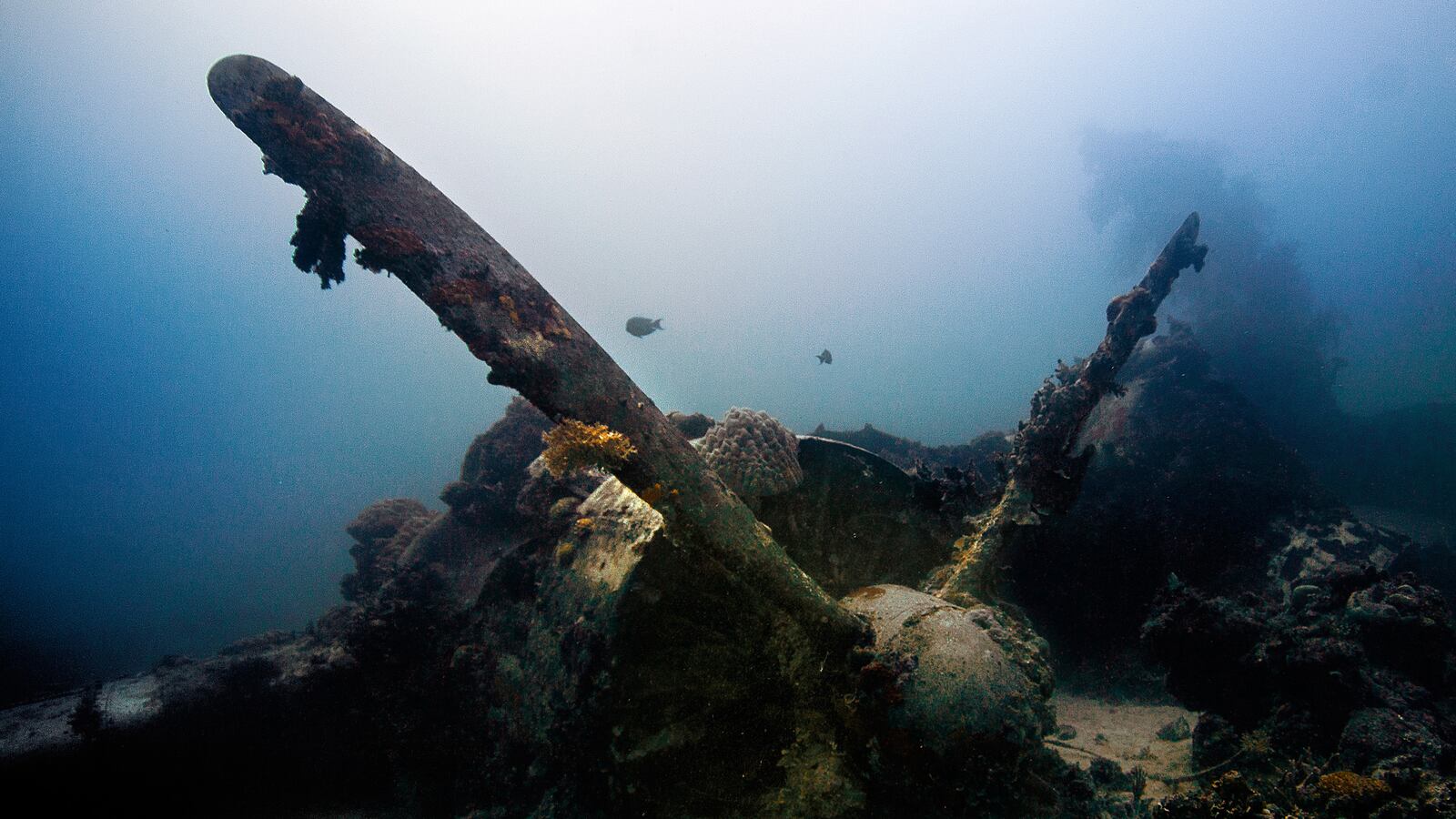The ghosts of World War II’s Pacific theater rest deep beneath the clear blue Micronesian Sea.
For 70 years, the remains of a deadly American attack on Japan’s forces have been growing layers of coral and barnacles and been inhabited by schools of sea life on the seabed of Truk Lagoon‚ a 40-mile-wide atoll of paradisiacal islands in the Federated States of Micronesia.

In over two days in February 1944, a massive offensive by the U.S. Navy downed more than 50 Japanese ships and 270 planes. They sank to the bottom of the ocean, forming an epic seafloor graveyard of cars, tanks, fighter aircraft, and hulking ships—along with the remains of thousands of Japanese sailors and pilots.
To gain control over the South Pacific, the United States had launched the attack, perceiving the area to be a major threat to Allied operations.
During the offensive, dubbed Operation Hailstone, the U.S. Navy pelted the Japanese naval and air base of the Truk Lagoon with airstrikes and ship and submarine attacks in a surprise raid. They came prepared, with a fleet of seven battleships, and more than 500 planes—25 of which were shot down and joined the enemy’s aircraft at the bottom of the sea.
More than a year after Operation Hailstone, Japan surrendered. But before the Japanese laid down their arms, multiple strikes were carried out in retaliation for the destruction of Truk. In 1945, the last Japanese military departed the area and the United States deemed it part of the Trust Territory of the Pacific Islands, before it joined Micronesia in 1979.
It was only 10 years prior, in 1969, that the site was brought to public attention, rediscovered by famed underwater explorer Jacques Cousteau, who documented it for his film Lagoon of Lost Ships.
Now, it’s the Atlantis of modern warfare, a popular site for adventurous divers willing to brave shark-infested waters to explore ships filled with potentially dangerous explosives.
Among Japan’s sunken fleet a few ships have become must-sees for divers and photographers, their remains displayed against the deep blue water and dramatized by gaping holes made by torpedoes and bombs.
Sunk deep under the surface, San Francisco Maru, a long-serving cargo ship, is one of the most famous sunken treasures of the lagoon. Housing a fleet of tanks, staff cars, and holding areas filled with mines and torpedoes, the wreck’s massive estimated worth led it to be dubbed the “Million Dollar Wreck.”
The Fujikawa Maru is considered one of the best dives in the world, as its relative proximity to the surface makes it easy to explore. The 7,000-ton freighter is still stocked with sake bottles and four fighter planes, and it is encircled by gray reef.
The wrecked ships have sunk as far as 200 feet below sea level, and, other than a layer of coral and sponge encrusting the surface of the ships, many seem to be remarkably intact. Crew quarters are still filled with dishes and other domestic and personal items. Cargo holds are still stocked with munition, though the weaponry sunk with the ships is still considered dangerous. By the end of WWII, Japan had begun using untested chemicals in their explosives, and their potential dangers are still unknown. Divers are free to explore the wreck’s innards, but are banned from removing any artifacts.
Other findings by divers have been more morbid, like skulls and bones from Japanese soldiers killed in the attacks. There have been attempts to excavate the remains, and many have been removed over the past half-decade. In the 1980s, divers recovered bones from 400 men who were aboard the Maru Aikoku. They were cremated and returned to Japan.
Cousteau’s documentary, which filmed the wreck which few ever had seen it before, uses the sunken fleet to tell a larger story of war, loss, and ephemerality. “Truk Lagoon presents a mysterious planet of life and death. On the one hand, nature absorbs the artifacts of war. And on the other, she has preserved them,” the narrator says in closing. “Only centuries from now will every trace of man’s follies vanish from the bottom of Truk Lagoon.”






